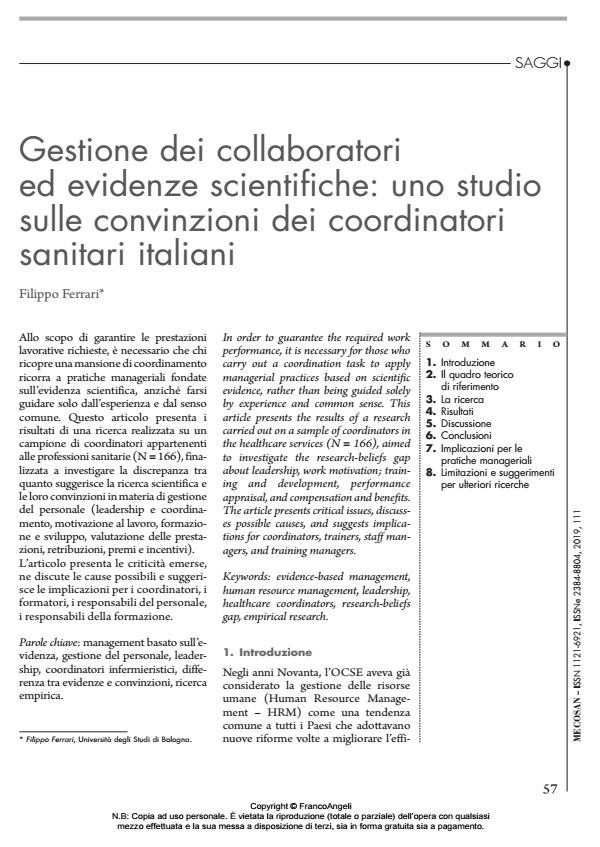Gestione dei collaboratori ed evidenze scientifiche: uno studio sulle convinzioni dei coordinatori sanitari italiani
Titolo Rivista MECOSAN
Autori/Curatori Filippo Ferrari
Anno di pubblicazione 2020 Fascicolo 2019/111
Lingua Italiano Numero pagine 26 P. 57-82 Dimensione file 327 KB
DOI 10.3280/MESA2019-111004
Il DOI è il codice a barre della proprietà intellettuale: per saperne di più
clicca qui
Qui sotto puoi vedere in anteprima la prima pagina di questo articolo.
Se questo articolo ti interessa, lo puoi acquistare (e scaricare in formato pdf) seguendo le facili indicazioni per acquistare il download credit. Acquista Download Credits per scaricare questo Articolo in formato PDF

FrancoAngeli è membro della Publishers International Linking Association, Inc (PILA)associazione indipendente e non profit per facilitare (attraverso i servizi tecnologici implementati da CrossRef.org) l’accesso degli studiosi ai contenuti digitali nelle pubblicazioni professionali e scientifiche
Allo scopo di garantire le prestazioni lavorative richieste, è necessario che chi ricopre una mansione di coordinamento ricorra a pratiche manageriali fondate sull’evidenza scientifica, anziché farsi guidare solo dall’esperienza e dal senso comune. Questo articolo presenta i risultati di una ricerca realizzata su un campione di coordinatori appartenenti alle professioni sanitarie (N = 166), finalizzata a investigare la discrepanza tra quanto suggerisce la ricerca scientifica e le loro convinzioni in materia di gestione del personale (leadership e coordinamento, motivazione al lavoro, formazione e sviluppo, valutazione delle prestazioni, retribuzioni, premi e incentivi). L’articolo presenta le criticità emerse, ne discute le cause possibili e suggerisce le implicazioni per i coordinatori, i formatori, i responsabili del personale, i responsabili della formazione.
Parole chiave:Management basato sull’evidenza, gestione del personale, leadership, coordinatori infermieristici, differenza tra evidenze e convinzioni, ricerca empirica.
Filippo Ferrari, Gestione dei collaboratori ed evidenze scientifiche: uno studio sulle convinzioni dei coordinatori sanitari italiani in "MECOSAN" 111/2019, pp 57-82, DOI: 10.3280/MESA2019-111004